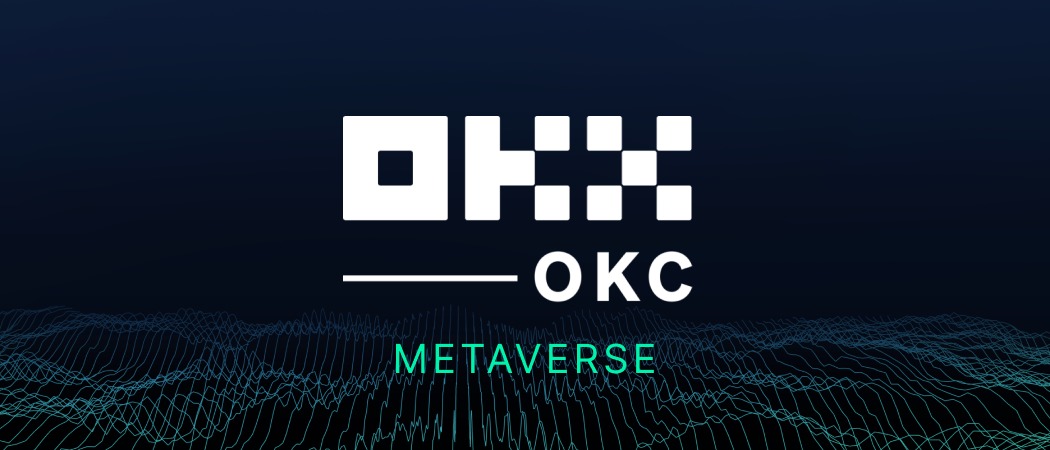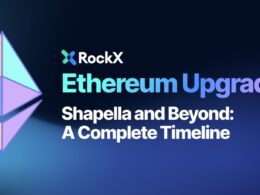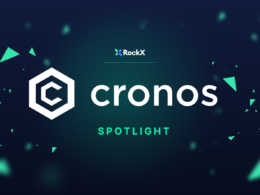As the world increasingly moves online, the demand for virtual spaces that mirror and augment our real-world experiences is growing. The metaverse is a natural extension of this trend.
Metaverse is a shared, virtual reality world where users can interact with each other and with computer-generated objects and environments.
But much like the traditional world, this virtual reality is in danger of being controlled by a handful of giants like Meta (previously Facebook). This is where blockchain technology aims to revolutionize this movement through decentralization and giving control back to the users.
By utilizing blockchain, a virtual world can be created that is open and accessible to everyone. But, the existing blockchains face the issue of scalability, high cost, slow speed, and lack of security.
OKTC (OKT Chain) is one such blockchain that is built using Cosmos SDKs to allow developers to build next-generation applications for the Metaverse.
What is OKTC?
OKTC (OKT Chain) is a public blockchain that is designed to provide a safe and efficient way to bring people together in the metaverse.
This EVM-compliant L1 blockchain network is built on Cosmos which allows it to specialise in interoperability and optimal performance. It uses a unique consensus algorithm called DPoS+Tendermint to achieve high performance and scalability.
This allows businesses to take advantage of the best features of each system, while still being able to seamlessly connect and interact with each other. OKTC also provides a variety of tools and services that help businesses optimise their applications for maximum performance.
OKTC and the Metaverse

The growth of the metaverse is driven by a number of factors. One of the most important is the increasing power and affordability of technology, which is making it easier for people to access and explore virtual worlds.
Another key factor is the growing popularity of social media and gaming, which is giving people a taste for the kind of immersive, social experiences that the metaverse can offer. Finally, there’s the rise of the ‘creator economy’. And as more people look to monetize their online activity, the metaverse is likely to become an increasingly attractive option.
Here, blockchain technology, which is lauded for its security and privacy features, is used to establish the decentralised network of these virtual worlds. However, these same features can also make it difficult to scale a blockchain network.
As an answer to this problem, OKTC enters with a focus on true interoperability (IBC) and maximises performance. It is actually one of the only open chains existing in the intersection between Ethereum and Cosmos.
This high-performance platform is built specifically for future decentralised applications (dApps) in the metaverse. At high scalability, developers can build and scale with low gas fees while the all-in-one multi-chain Web3 interface provides a seamless, multi-chain, unified Web3 experience to the user.
Low Cost, High Performance

A blockchain is a digital ledger of all cryptocurrency transactions. Whereas traditional databases are centralised, blockchains are decentralised. No one entity owns the blockchain, and everyone can see the data that is recorded on it. This makes it difficult for anyone to tamper with the data, as they would need to change the data on all of the computers that are part of the network.
Blockchains are “immutable”, which means that once data has been recorded on the blockchain, it cannot be changed. This is a key feature of the technology, as it helps to ensure the data is accurate and trustworthy.
But to build the applications of the future, blockchain needs to be able to handle the large user base. That’s where OKTC’s scalability makes it an optimal choice for building the metaverse where billions of people will interact with each other in the future.
Designed to be scalable means it can handle a large number of transactions without slowing down. The combination of low cost and high performance makes OKTC an attractive option for a variety of applications, including DeFi protocols, NFTs, and other applications within the Metaverse.
Security

While blockchain technology has many features in terms of no central point of failure and resistance to tampering, its security is not infallible. There have been a number of high-profile hacks of blockchain-based systems, and the complexity of the technology can make it difficult to deploy securely.
Blockchain security is critical for the Metaverse because it ensures that digital assets and transactions are safe and secure. It needs a trustless system, which means that users can transact without the need for a third party. But this makes the Metaverse an attractive target for hackers and scammers.
So, in order to build a decentralised, open-source virtual reality that billions of people can use safely, we need a secure foundation for the Metaverse.
The security-first approach of OKTC which involves decentralised architecture, a powerful analysis tool, and a contract audit service will help protect the Metaverse from these threats. The OKTC team is constantly working to improve security, and they have implemented a number of security measures.
The security advantages of blockchain make it a promising technology for a wide range of applications.
Large Ecosystem

OKTC is developed by the leading crypto platform OKT Chain to offer a high-performance, scalable platform for developers to create blockchain-based, big-scale dApps.
OKT Chain is a crypto exchange and Web3 ecosystem which is used by more than 20 million global customers in over 180 international markets. Its Web3 wallet meanwhile offers an all-in-one multi-chain interface that allows users to easily manage both their token and NFT portfolio.
Earlier this year, OKT Chain released OKT Chain bridges for smarter, more efficient, and more affordable on-chain trading for users. At the time, it announced that it would bridge Tether’s USDT stablecoin, EURt Euro-pegged stablecoin, and Tether Gold (XAUT) onto the OKTC.
OKTC is the 12th public chain worldwide to be listed with USDT. This collaboration with Tether also marked the first time bridged USDT has been issued to a Cosmos-powered ecosystem.
Tether is the largest stablecoin in the crypto industry and with the launch of USDT on OKT Chain, OKTC has enabled greater speed and reduced cost of making deposits and withdrawals for tons of users.
A couple of months back, OKTC also integrated with Unstoppable Domains, the leading provider of NFT domains that give people a user-owned, secure, and portable identity for Web3. Crypto is still confusing, complex, and challenging for many and with this integration, OKTC made transferring crypto simpler and easier.
Thanks to its network support on Zeeve, it has become easy to deploy robust OKTC nodes (OKT Chain), whether they are dev or validator nodes, and receive secure API endpoints for connecting your BLASTS quickly with the OKTC.
Overall, the OKTC features more than 100 projects and has a large and diverse ecosystem that is constantly growing.
Conclusion
The Metaverse is a groundbreaking platform that has the potential to change the way we interact with the digital world. Blockchain as a foundation is essential for ensuring that the Metaverse is safe, secure, and accessible for everyone. As a high-performance blockchain, OKTC seems to be the perfect fit for the Metaverse.
The secure, programmable, and low-cost smart contract platform is designed to be the underlying infrastructure for a decentralised virtual world. It is constantly being improved and upgraded, making it one of the most innovative and cutting-edge blockchain platforms in the world.
It is optimised to build an open metaverse, with features such as high scalability, low cost, high speed, low latency, robust security, and support for smart contracts. In conclusion, OKTC is a promising blockchain platform that has the potential to power the Metaverse and enable a new era of decentralised applications.









